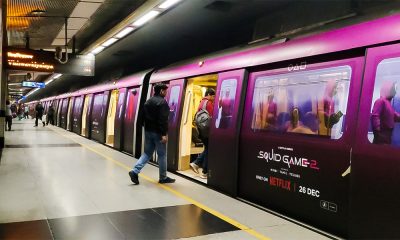Ad Policies & Regulations
Advertising industry can significantly add to Railways’ revenues: Suresh Prabhu
An exclusive interview with Union Railway Minister Suresh Prabhu
 Indian Railways, one of the world’s
Indian Railways, one of the world’slargest railway networks comprising around 115,000 km of track over a
route of 65,436 km and 7,172 stations, moves an estimated 8.3 billion
passengers every year, or 23 million passengers a day. The rail network
is also a lifeline for the movement of cargo across the country. The
expansive infrastructure that supports the railway operations that
includes the trains and railway stations, also serve as an extensive
canvas for brand advertising.
Union Railway Minister Suresh
Prabhu has taken a visionary approach to modernise the railway
infrastructure and services and to accelerate the railways’ revenue
growth. He sees a potentially key role for the advertising industry in
growing the railway revenues as well as certain classes of railway
infrastructure.
In the run-up to the Outdoor Advertising
Convention (OAC) that will be held in Mumbai during July 24-25, the
Railway Minister shares his perspectives on the role of advertising
industry in the Railway sphere in an interview to Outdoor Asia’s
Managing Editor Rajiv Raghunath. Edited excerpts of the interview:
have envisioned the modernisation of Indian Railways and rapid
expansion of the rail infrastructure across the country. Accelerated
revenue growth is one of your stated goals. Do you think that increased
non-traffic revenues through avenues like advertising revenues can make a
difference to Railways’ revenue growth?
Non-traffic avenues
like commercial publicity have the potential to significantly add to
railways’ revenues. It is an evolving area in Indian Railways (IR) and
advertisement can play a big role in taking the message across to the
customers in a growing economy like ours.
Down the decades,
various railway properties have provided media for advertising, such as,
trains and railway stations. Do you see a scope for more innovative
advertising opportunities in the Railways sphere, on the lines of what
is seen in the developed countries?
Yes. With increasing
reach of visual media, some areas where Indian Railways is looking to
explore are through internet/websites, video walls, onboard
entertainment on trains, branding of trains and stations, etc
.
You
had set up a taskforce to submit a detailed report on how to utilise
the idle space in coaches, wagons, trains, railway stations, consumable
items, utensils, beddings, which could be used for advertising,
publicity and to generate additional revenues. Are there any further
developments on this count?
The Task Force submitted its report in May. The report has been approved in principle by the Board.
Advertising
firms are engaged in various public private partnership projects
(PPPs), such as, development civic amenities, transport infrastructure
and the like, in lieu of ad rights. Do you see a greater role for
advertising firms in similar PPPs in the Railways?
We are
open to look at all models including PPPs and commercial publicity
rights to bring revenue for developing infrastructure for Indian
Railways.
Advertising firms investing in the infrastructure
sector are increasingly looking at long-term projects that go beyond 10
years, even up to 20 years. Is there scope for engaging advertising
firms in Railway projects that offer long-term contracts?
The
Task Force has recommended that the requirement of the industry with
regard to the options available for commercial publicity on IR can be
ascertained through a Media Evaluation Agency which will also recommend
the period of contract based on the investment – returns cycle for
different media platforms.
Time to time, various advertising
firms take up train branding, especially of prestigious trains like
Rajdhani Express and Shatabdi Express, and also take up the maintenance
of the trains and deliver consumer services to the travellers. Do you
see such projects increasing in scale? Can this model be applied across
various categories of trains, and in different cities and towns?
The
Task Force has recommended that RITES may be engaged to take up the
branding exercise on behalf of IR. RITES will take need-based support
from media agencies for developing a branding concept which meets the
requirement of the industry as well as IR.
Looking ahead, do
you see any new ways to engage the advertising industry in the overall
development of Railway infrastructure and services?
In
addition to helping the Railways generate additional revenue for IR, the
advertising industry can help in dispensing information to the general
public as well as educate the public in using the assets and premises of
the Railways in such a way that it ensures cleanliness, creates a sense
of ownership and brings pride in being a user of Indian Railways.
-

 Campaigns
CampaignsNetflix India goes full green light on OOH with Squid Game season 2
-

 Creative Concepts
Creative ConceptsSkechers launches 3D cricket shoe Bus Shelters in Mumbai
-

 Sustainability
SustainabilityStatus of sustainable printing in the OOH Industry: Challenges and pathways forward
-

 Sustainability
SustainabilityGreen Advertising: Insights on Sustainability in Out-of-Home Campaigns
























